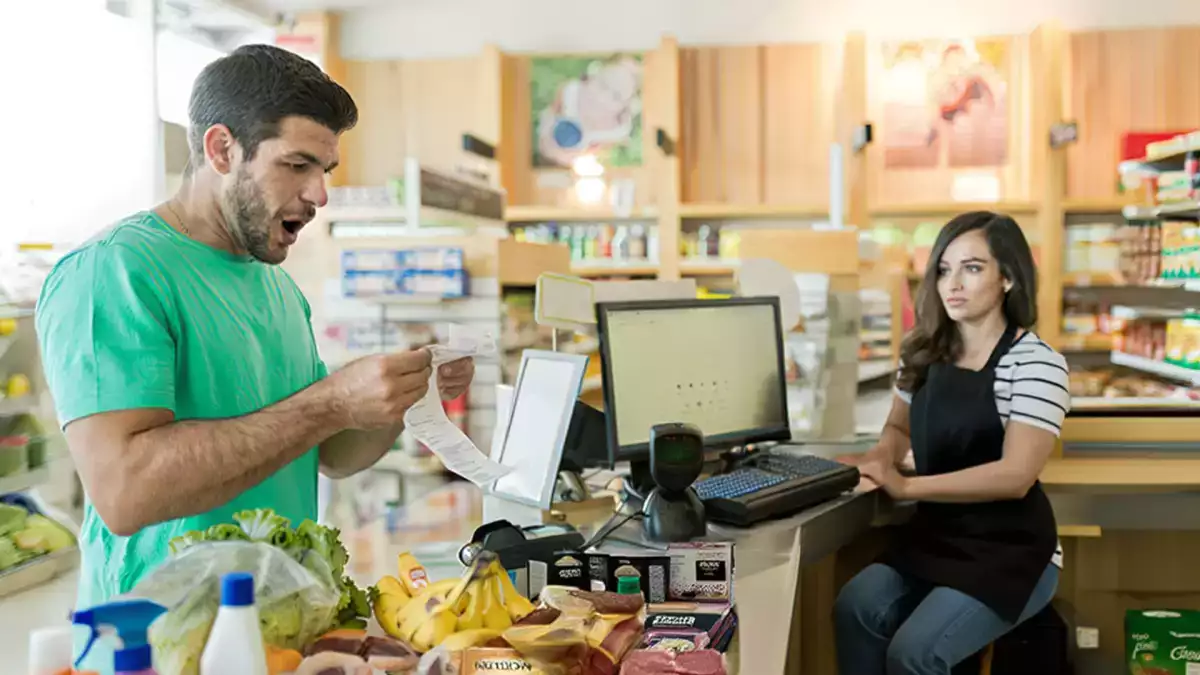These 10 budget products look like deals but end up being some of your most expensive purchases

Every week it's the same story: you go to the market with the intention of buying only the essentials, pick up half a dozen "cheap" products and, when you get to the checkout, the total seems like a scare.
The feeling is that the money has evaporated - and, more often than not, it's not just an impression. Some supermarket items have the power to drain the budget without us realizing it, precisely because they cost little individually but accumulate silently over the course of the month.
These products are usually automatic purchases: the biscuit that goes with your afternoon coffee, the yogurt that "doesn't make a difference", the bottled water bought on the run or the small packages that seem practical but cost more per liter or kilo. It's the typical trap of consumption disguised as convenience. When we put it all in perspective, we realize that these "small expenses" turn into hundreds of dollars wasted without any real need.
The most curious thing is that industry and marketing know exactly how to lead us into this type of behavior. Products in smaller packages, broken prices (such as $4.99), "take 3 and pay 2" promotions and strategic shelf layouts are no coincidence - they are techniques designed to make you spend more while thinking you're saving money.
In this article, we're going to list 10 products that look cheap but add up to money every month. You'll discover how much they really cost when bought frequently, why they are so attractive and, above all, how to replace or eliminate them without giving up comfort.
Understanding these small consumption habits is the first step towards reorganizing your finances without having to make drastic sacrifices. The good news is that, with small changes, you can save a surprising amount of money. Get ready to take a fresh look at your shopping cart - and, what's more, make your money go further.
1. Ready-made drinks and "flavored waters"
These little bottles that promise refreshment and practicality are a classic example of accumulated spending. They're easy to put in the trolley, but they create a habit of buying them every day.
In the end, what was an occasional choice becomes automatic consumption. A filter and fresh fruit at home will save you money and reduce waste.
2. "Fit" snacks and yogurts
The packaging is small, the look is healthy and the promise of practicality is tempting. But these products have a high psychological cost: they make you believe that you are "investing in health", when they are often just disguised versions of sweets and desserts.
Making simple options at home - such as natural yogurt with fruit or nuts - can be more balanced and avoids impulse purchases.
3. Coffee capsules and instant drinks
Capsules bring comfort and speed, but encourage daily consumption without reflection. The coffee ritual ceases to be a pleasure and becomes an automatic habit of convenience.
When you lose track of how often you drink, your spending grows without you realizing it. Preparing your own coffee calmly is a way of recovering the taste and better controlling consumption.
4. Freshly sliced cold cuts and sausages
The sensation of freshness is inviting, but these products are short-lived and lead to waste.
It's common to buy more than you need "for the week" and end up throwing some of it away. The ideal is to plan smaller portions and make use of what you already have at home before replenishing.
5. "Multi-purpose" cleaning products
The promise of practicality is tempting, but the result is the opposite: a cupboard full of bottles for every room.
Many of these products have similar compositions, and excess only leads to accumulation and confusion. Opting for simple, versatile solutions is more efficient - and sustainable.
6. Refillable liquid soaps and cosmetics
The talk of refills is ecological, but sometimes it encourages continuous consumption. As the product seems more practical, it is used more and replenished frequently.
Reducing the variety of fragrances and choosing durable packaging helps curb the impulse to buy.
7. Breads, cakes and bakery products
Nothing beats the smell of fresh bread, but it's easy to fall into the trap of buying "just one more" every day.
These recurring purchases, made on impulse, become a habit that is difficult to control. Preparing bread at home, even if only occasionally, is a good way to reduce impulse buying and bring back the pleasure of cooking.
8. Items near the checkout
Candies, chocolates, gum, lighters, batteries... Everything there has been strategically placed to grab your attention in the final seconds of the purchase.
These are called "invisible expenses": small, quick, emotional. Avoiding looking at the shelves at the checkout and focusing on the payment is one of the most effective ways to resist.
9. Ready meals and individual portions
Take-away options seem practical, but they hide an emotional cost: dependence on convenience.
When everything comes ready-made, we lose the habit of preparing and planning meals. Taking a few minutes to organize the week's meals gives us autonomy and reduces unnecessary purchases.
10."Unmissable promotions"
The word "offer" awakens a powerful trigger: the fear of missing out on an opportunity. But buying something just because "it's on sale" is one of the biggest financial self-deceptions.
If the product wasn't on your list, the savings are illusory. The secret is to buy out of necessity, not on impulse.
The ant effect: the invisible villain of finance
The problem isn't one specific item - it's the accumulation of small automatic decisions. When we add up all the "just this once", the result can be surprising.
These expenses disguise themselves as convenience, but rob us of the chance to direct our money towards what really matters: experiences, security or personal goals.
Being aware of your own consumption patterns is the first step to escaping this trap.
On your next trip to the market, look at your trolley and ask yourself: "Is this a real need - or just a habit in disguise?"
The answer could be the start of big savings... without you having to give up anything essential.
 Mirella Mendonça
Mirella Mendonça
Comments